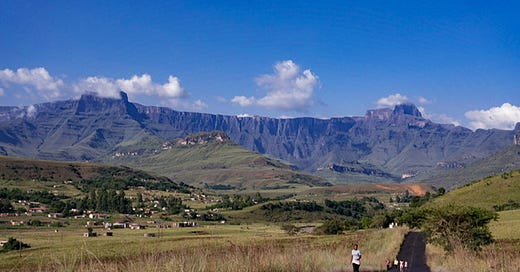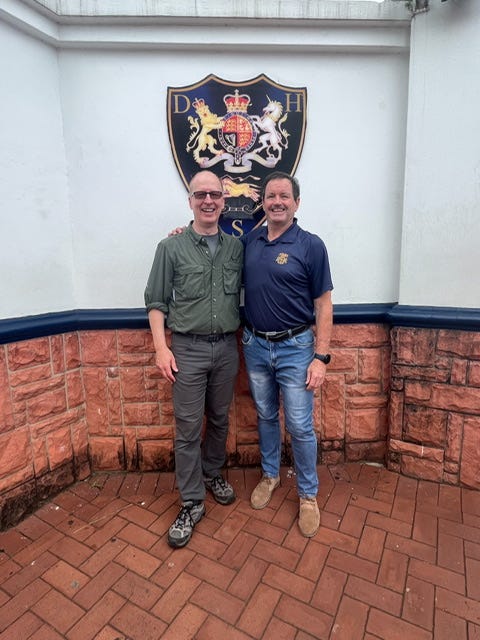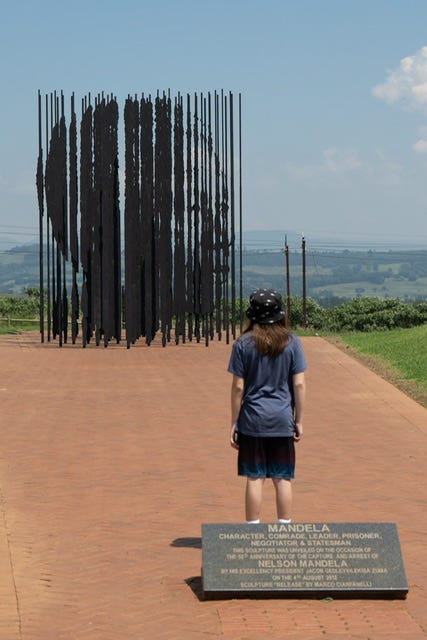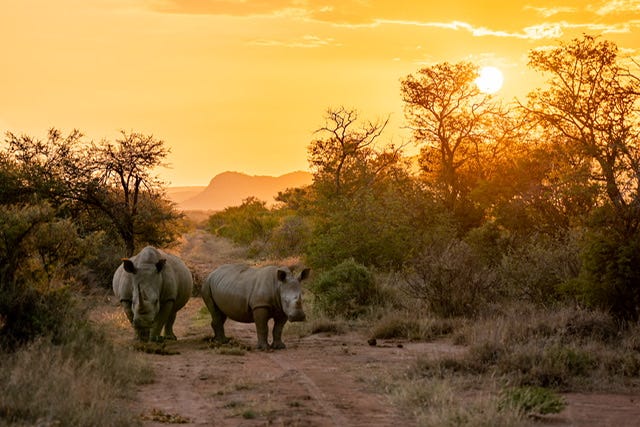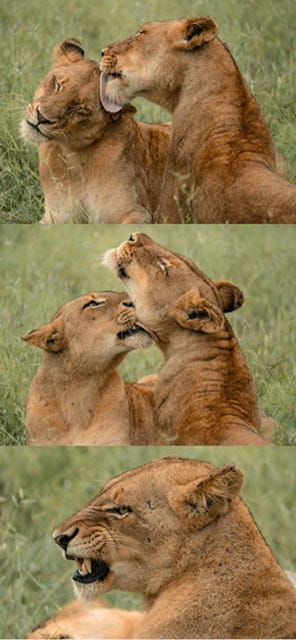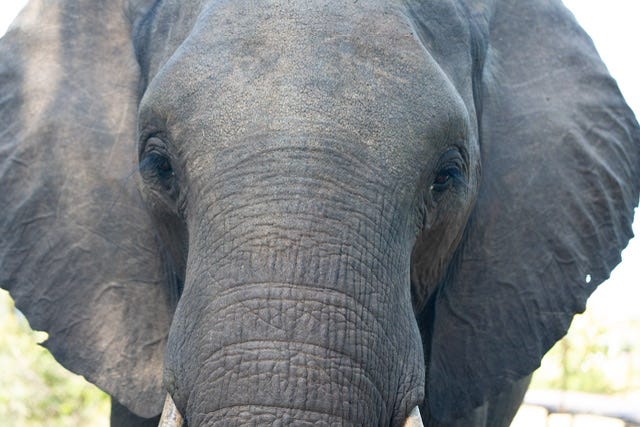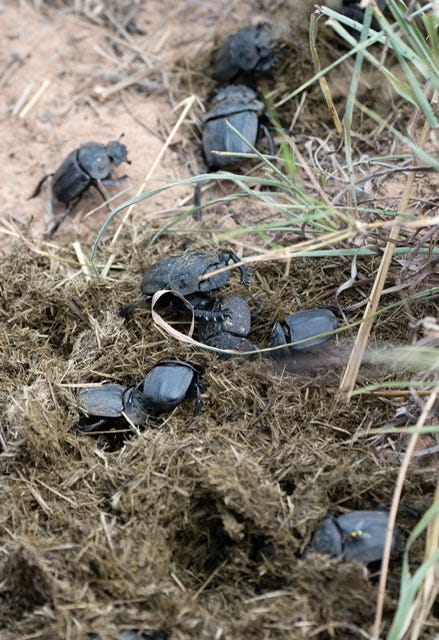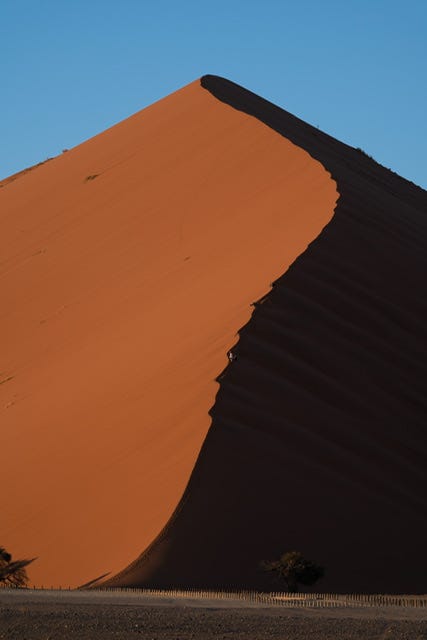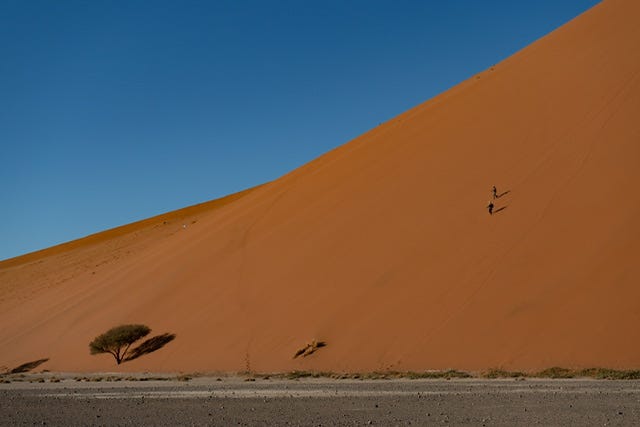Worlds Elsewhere photo journal: comprehensive photos of our adventures
Instagram: @worldselsewhere
*******************
We experienced so much in Southern Africa that I am writing this blog in two parts , each focusing on 10 select experiences; I will send Part Two tomorrow.
It has taken me awhile to post, in part because we have been occupied with moving and settling into our new house in Denver, but also because I haven’t fully processed our otherworldly experiences in South Africa, Zimbabwe and Namibia- it may take me the rest of my life to do so. Many times it felt like we were in a fantastic dreamscape; only Antarctica came close to evoking a similar sensation of sensorial submersion.
My sister Michelle (adored “Aunt Michie”) joined us for this leg. Hudson joyfully welcomed a travel companion far superior to his parents and Michelle’s camaraderie produced some of our most cherished memories of the whole trip (we also celebrated her birthday in Namibia). Emerson also joined us in Zimbabwe and South Africa during his spring break; our lively family dynamics led Michelle to suggest that we start our own reality show!
Words fail to convey the breadth and depth of our experiences, but Theo’s incredible photography comes much closer: visit the website Worlds Elsewhere and @worldselsewhere on Instagram for more photos than we can fit into these blogs.
Part One:
We began by camping in the Drakensberg Mountains; the Drakensberg form the eastern border between South Africa and Lesotho, a mountain kingdom encircled within South Africa. Our campsite faced the vast cliff face of the Amphitheater, approximately three times the area of Yosemite’s El Capitan. Theo and Michelle trekked into the mountains while Hudson and I enjoyed the views from camp (and Hudson learned to play rugby)! It was a homecoming of sorts for Theo, as he had hiked here as a high school exchange student to South Africa in the 1980’s.
Our next stop was Durban, where Theo lived during his junior year of high school. Amazingly, as we drove into Durban, Theo noticed we were heading down the street where one of his host families had lived and we were able to take a photo outside the house. (The family has long since moved.) Just as sharing with our children the sights of Argentina, 30 years after we lived there, gave us goosebumps, seeing Theo relive memories of his time in Durban 38 years prior, was heartwarming. Theo reconnected with his exchange high school, spending time with the Head Master and Andrew Shedlock, who runs the Durban High School Foundation Trust (i.e. alumni coordinator).
On our way to Durban, we visited the Mandela Capture Site, a museum memorializing the location where Nelson Mandela was arrested on August 5, 1962, while driving a country road disguised as a chauffeur (the arrest likely due to an informant’s betrayal, likely with the CIA’s assistance). The Capture Site provided an impressively comprehensive history, chock full of primary sources, of the apartheid resistance movement. I learned many things, including about the secret meetings between Mandela and the Afrikaans political leaders that ultimately led to the dismantling of apartheid. The white racist government’s coming to the negotiating table only because of South Africa’s economic decline, catalyzed by domestic resistance and international pressure, is yet another example of why the arc of moral justice is so (damn) long. It takes incalculable blood, sweat and tears to raise the cost of the status quo to an unacceptably high level such that reform becomes the preferable option for those in power.
The safari lodges where we stayed in South Africa, Zimbabwe and Namibia know and respect the animals deeply, living as cohabitants of the land, not as controllers of the animals’ lives. Our guide at Dulini Moya in Sabi Sands knew animals by sight; when we saw a gorgeous leopard sleeping in deep grass, he said “There’s Ravenscourt”. He knew where one leopard, Thamba, roamed, and gave us the heart-stopping experience of watching Thamba, crouched low and creeping silently, stalk impalas. As Thamba established his hunting spot, he ran by our parked vehicle (within arms reach, not that we would have dared!), impervious to us and completely focused.
At Dulini Moya, within 36 hours of arrival, we saw the Big 5 (Cape buffalo, rhino, elephant, leopard, lion). Elephants became a common sight, and you don’t linger around Cape buffalo (it may be anthropomorphizing but they seem to glare with undiluted hostility) but seeing a mama rhino with her baby just up the path from us was deeply moving. We got as close as permitted to three lions; uninterested in, and unperturbed by, us, they lazed and stretched, groomed each other and rambled off when finished.
Dulini Moya provided unparalleled opportunities to share breath with wildlife- we always stopped the required distance away, but if they approach you, it is “fair game” to stay close. (Hudson gleefully punned as we embarked on one 5am safari: “The game is afoot!”). One young bull elephant put on a dramatic show, tossing dirt on himself and us, then throwing a branch at our Land Rover, creating a loud clank that led him to jog away; he then ran parallel to us as we drove away, trumpeting a warning (“that’s right, you heard me, you better leave!”)
At the Marataba Conservation Camp within South Africa’s Marakele National Park, we met two cheetah brothers lounging near a watering hole. As the sun set, they arose for their evening predations. We watched one casually mark his territory and marveled at their sleek movements, mere meters from our vehicle.
Being surrounded by animals:
At Marataba, cruising down the Matlabas River at sunset, we were suddenly swarmed from above by thousands of red billed queleas. Our guide wondered what we could have possibly have done to merit this breathtaking blessing of innumerable birds swooping by our heads and then up into the sky, over and over.
In Namibia, dozens of curious springbok blocked our path. These usually highly skittish creatures viewed us with disdain, chewing their meal and ambling around our vehicle. We had no choice but to patiently wait and trade gazes. It reminded us of Custer State Park in October last year, where we were surrounded by bison who licked salt off our car’s tires and wheel wells while we waited for the herd to clear the road.
In Victoria Falls, Zimbabwe, further reminding that we are always in the animals’ territory, and not vice versa, a herd of at least 18 elephants sauntered onto the lodge grounds one morning and laid us under siege in our rooms for 2 1/2 hours. It boggled my mind to go eyeball-to-eyeball with an elephant less than a foot away, with just a window (which suddenly seemed quite flimsy) between us. The herd nonchalantly guzzled from our plunge pools, tramped the walkways to our rooms, and chomped on the vegetation surrounding our tents. We were not allowed to leave the rooms; indeed, a member of housekeeping staff outside our room was charged by a young elephant as I opened the door, and she dashed to adrenaline-fueled safety. (Hearing an elephant trumpet while running full speed at you- even if it is a mock charge, as most of these are- makes your blood run cold).
Marataba Lodge in Marakele National Park has an important rhino conservation program. The lodge is set on former farmland that is slowly reconstituting into bush in which animals such as lions, elephants and rhinos (a group of rhinos is a “crash”) may thrive. We saw many rhinos up close and learned about rhino middens, sites where the dominant rhino leaves his dung in a large mound to mark his territory. Other male rhinos passing through will poop near (but not in) the midden, leaving a calling card to acknowledge the dominant rhino’s authority.
In the Sossuvlei region of the Namibia Desert in Namibia, we climbed Dune 45, a star dune of red sand millions of years old. It’s a slog to climb the soft sand, but the view is amazing and walking down the steep side of the dune takes one-tenth of the ascent time!

